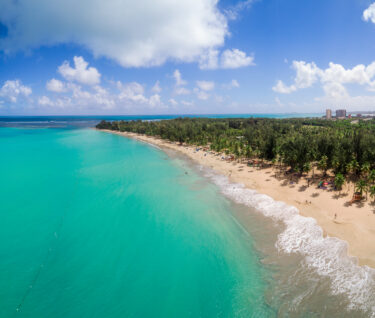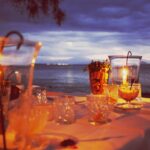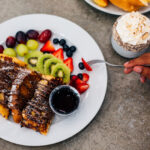
Interview with Local Pro Surfer Alejandro Moreda
National surf champion, “Ultimate Surfer” contestant and local legend Alejandro Moreda is one of Puerto Rico’s best surfers. The natural footer is often compared to the late world surfing champion, Andy Graves, for his artful but steel-nerved approach to riding ferocious waves.
Moreda spent his early years on the Qualifying Series alongside close friends and compatriots Dylan Graves and Brian Toth before eventually joining Billabong as a team rider. In the wake of Hurricane Maria in 2017, Moreda took a job with FEMA as a generator mechanic helping restore electricity across the island.
These days, the kinetic and convivial surfer has turned his attention to the next generation of wave riders. In 2008, he founded the “Los Gallitos de Ale” grommet event to showcase emerging local talent. And, when he’s not shredding Puerto Rico’s epic waves, he shares his experience and passion for the sport at his surf school Surf with a Pro.
Q. How did you get into surfing?
I didn’t grow up in a surfing family—my mom is a psychiatrist and my dad is a lawyer. My parents’ expectation was that I would go to college and get a nine-to-five job. I was nine years old when my older brother came home with a rusty surfboard with flames through the rails and a VHS cassette of the movie “Endless Summer 2.” That night, I watched the movie and there was no looking back. This was the moment—I was going to travel around the world chasing waves.
Q. How did growing up in Puerto Rico impact your surfing career?
Puerto Rico is known as the “Hawaii of the East Coast” for its wave quality, reef breaks and sheer power. All the legends who came before me were surfers in Hawaii. Growing up, we felt that we had to tackle the gnarliest waves out there. Puerto Rico prepares you for colossal waves, but you are also spoiled. When I traveled to competitions in Florida and California to compete as a junior, I would have to work on my small wave game.
Q. At what moment did you realize you could make a career of this?
It would probably be at the NSSA East Coast Event. I was competing in the Open Juniors and Explorer Boys categories as a 15 year old. I made the finals in the Explorer Men’s tier, surfing against elite guys from the East Coast. I remember thinking about the crew back home in Puerto Rico—we had always banded together and supported each other. This is it, I thought, this is our time.
Q. As one of Billabong team riders, what were your early experiences with sponsorships?
It was a dream come true to join Billabong. All the legends I had looked up to my entire career had been sponsored by them. It was surreal to be ranked amongst surfers of that caliber. Between 2007 and 2017, I was staying at the Billabong House in Hawaii—those were the golden years. I’ll never forget standing in front of the Banzai Pipeline on Oahu’s North Shore, about to surf with these incredible athletes that I once considered mortal gods.
Q. What was your career highlight?
It was Thanksgiving 2008, I was in Hawaii and they were filming the movie “Frothing.” The conditions were terrible, but the wind suddenly switched and there were these huge off-shore waves—historic, iconic waves that rarely happen in a lifetime. I ran over to the house, waxed my board and paddled out. These crazy waves were rolling in. I was so sure I was going to eat it—but it turned out to be the wave of my life. I was shell shocked. I had cemented myself as a Billabong rider and I was living the dream.
Q. What did your day-to-day life look like as a FEMA volunteer?
In the first four months after the hurricane, we didn’t take a break. We were working almost nonstop trying to restore service to all the generators on the island. It was heavy: you had people in critical condition at hospitals when the generators failed. My job was to make sure that didn’t happen. It was a very eye-opening experience. As I look back at it now, I realize it gave me a work ethic I never had before. I would wake up every day at 4am to start. I now have a very clear sense of what it’s like to live through a doomsday experience.
Q. What are your favorite places to surf in Puerto Rico?
My favorite beach has to be Aviones, in Piñones. It’s where I grew up surfing—I feel like everyone there is family. The culture and lifestyle are so amazing: empanadillas (mini fried savory turnovers) and fresh ceviche (from Willito’s) at the local food kiosks; cold beer on the beach; and fresh coconuts. Everyone enjoys the beautiful simplicity of just relaxing on the beach and watching the sunset.
Q. Where do you like to go out in San Juan?
I’d say my favorite bar is La Factoría, located in Old San Juan. There’s always salsa playing and here’s a secret doorway in the back that leads to another room where they play reggaetón—so you can mix up the atmosphere really easily. For gourmet dining, it has to be José Enrique. He’s a James Beard Award winner and, in my opinion, the best chef in Puerto Rico.



